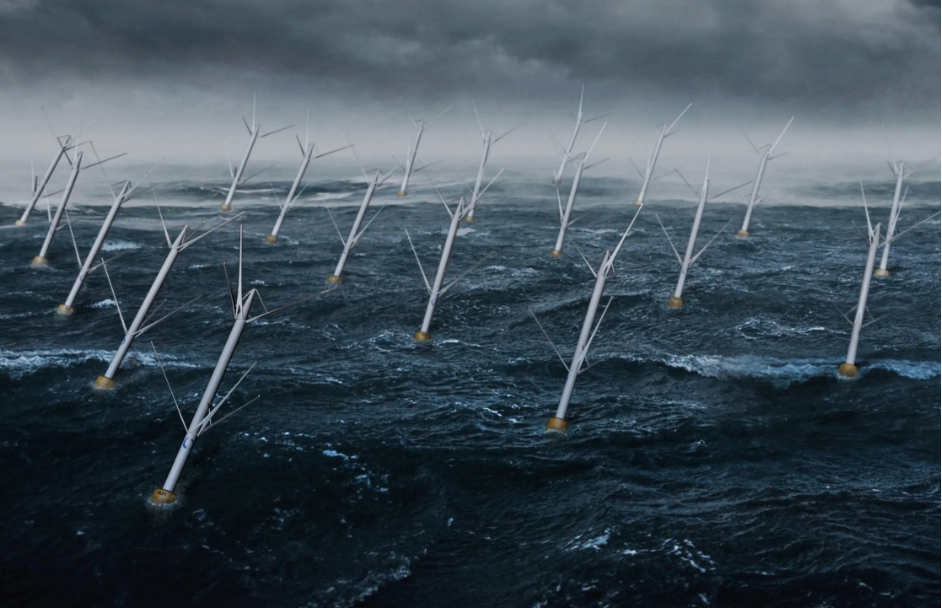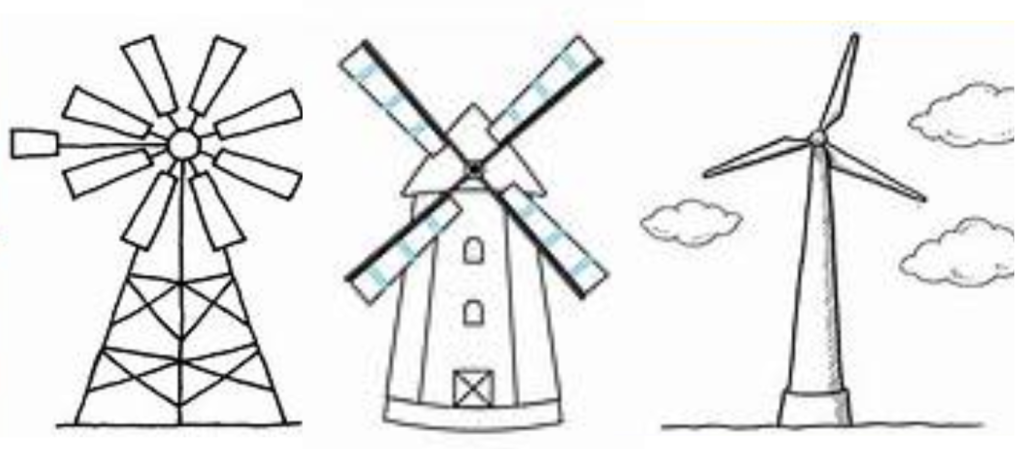
For more than two thousand years we use windmills, or windturbines. They all have a horizontal shaft, and nowadays they mostly have 3 blades.
These blades have a bended profile, so they make the wind bending and then slide along the profile. It is looks like the wings of an airplane and it works that way. The wind bends along the profile and that makes the wing go up, or the blade go round. They call this ‘lift’ power. It can work great, because, when the blade starts moving, it gets more wind by its own speed. The speed of the tip of a blade is always much higher than the true wind blowing. And, more wind speed along that blade means: more lift power. So more electricity.
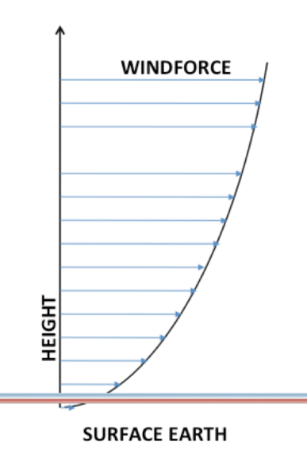
Nowadays, windturbines are built even higher than 150 meter. The highest at this moment is even 270 meters (Maasvlakte turbine). One rotation with 4 Beaufort delivers the energy of one household!
These enormous windturbines are impressive, but expensive. .
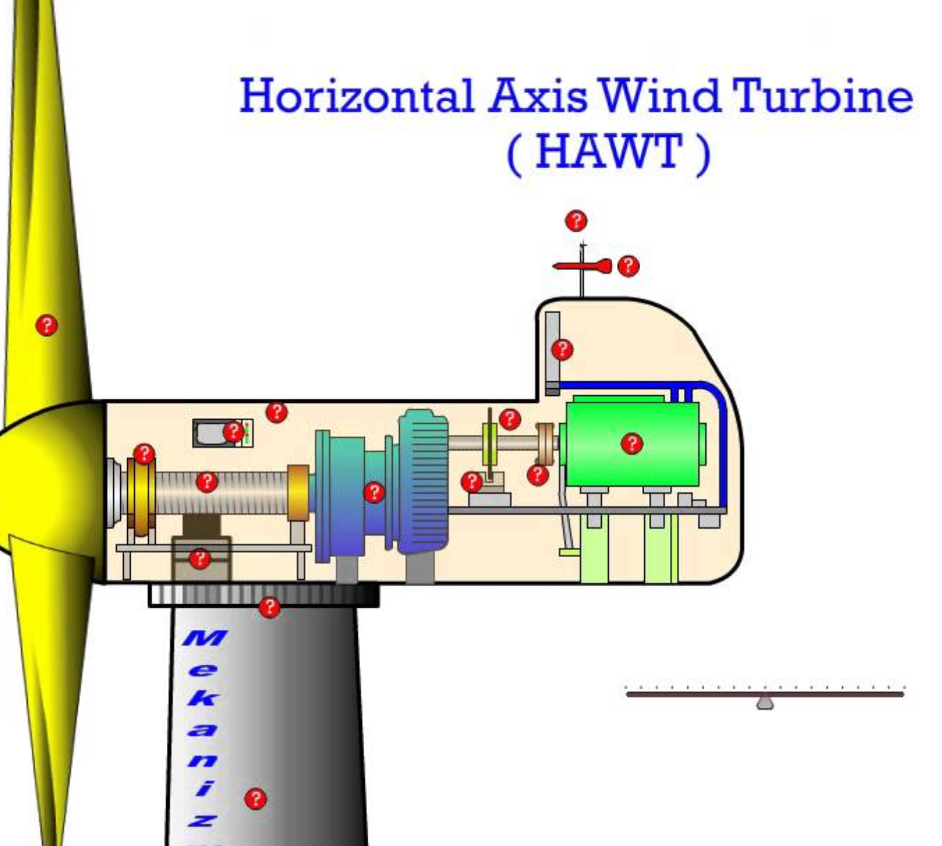
With all forces in top of the mast, it means a heavy construction, with extrapolating costs on building and maintenance when you go higher.
Other disadvantages:
* the blades can not handle wind direction changes. The yield lowers and there will be extra forces on the mast top.
* in the downwind area of the strike of the enormous blades, the wind is disturbed. So you can’t place these turbines close to another, and you need a lot of space for a wind turbine field.
Vertical shaft
There are windturbines with a vertical shaft.
That would solve a lot of these problems:
* the forces are evenly spread over the complete mast, which is the shaft itself.
* Changes of wind direction have no influence at all.
*You can put the alternator low. maintenance costs are low.
* the downwind area of disturbance is very small, so you can put a lot of them in a dense area.
* The building and maintenance costs for maintenance will be relatively low, with nearly all moving and electric parts on the lowest level.

But, there is a big ‘but’. First, these ones work not on lift, but generally on the resistance of the wind. Mr. Darrieus solved this a bit by inventing his windturbines
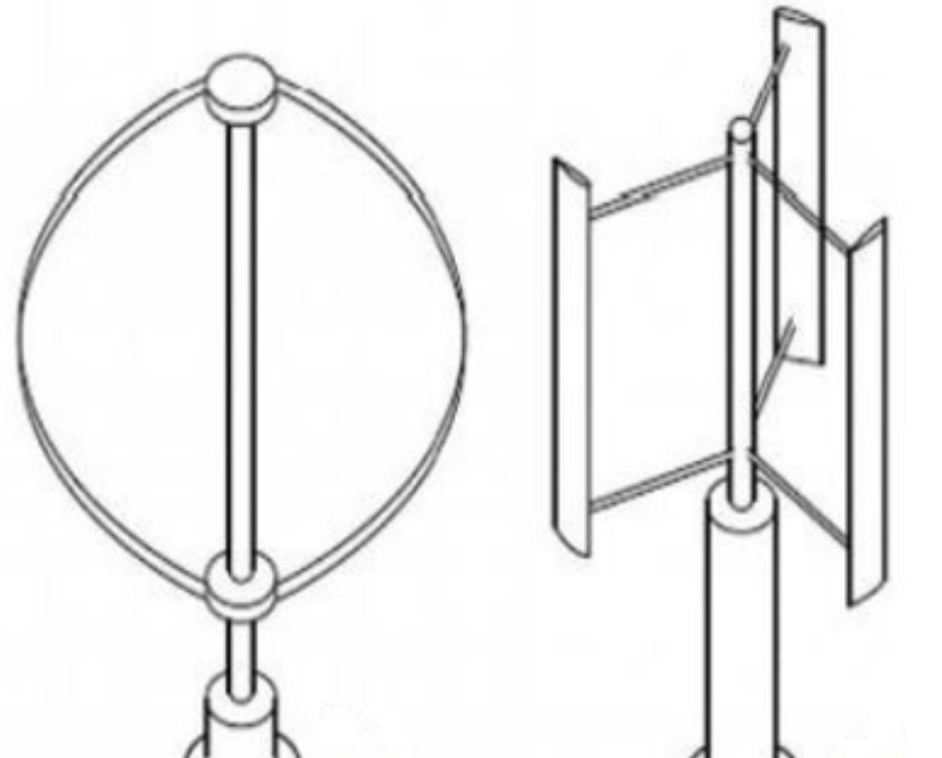
The smart windmill is the double windmill
Already for some decades, there are experiments in Japan with a smart principle: you make a double windmill, where one spins on the rotor (anchor) of the motor, and the other counter rotates and make the stator spin, the motor itself.
It leads to this principle, shown here under.
A next step is made by the Norwegian World Wide Wind, with the development of a double windturbine, light enough to float.

This turbine should deal with all disadvantages of the horizontal shaft windmill:
- The construction is light and cheap; maintenance costs are low
- No problems with wind direction changes
- High density of turbines possible
- They float so they can also be build in deeper seas
- No need for hurricane stops, because the construction and profile make them self regulating
In about five years we will know if this is true, because then they should be operational.

